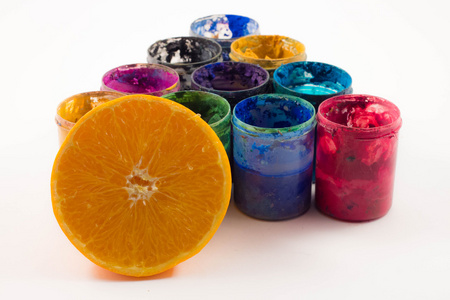A brief introduction to pigments/dyes
Pigment is a powdered substance used for coloring. It does not dissolve in media such as water, oil, resin, and organic solvents, but can be evenly dispersed and colored in these media, while also having a certain degree of covering power. The basic requirements for pigments used in art are that the finer the particles, the brighter the color, and the longer they last without changing color (good stability). Except for white, almost all watercolor pigments are transparent. This can meet the needs of watercolor cover dyeing.

Water powder pigment was originally invented by adding white powder to watercolor pigments to make the color opaque. Due to the transparency of watercolor pigments, it is difficult to modify them once they are painted incorrectly. And watercolor pigments can be easily modified due to their opacity. Later, raw materials such as arabic gum were added to the watercolor pigment to further improve its performance. Arabic gum can give a layer of gloss to the surface of watercolor pigment after it dries, but in special situations that require flat coating (such as painting renderings and coloring animations), gum can form irregular spots on the color surface or make the color uneven, so there is a specialized debonding pigment.
Oil painting pigments are diluted with oil.Chinese painting pigments are very rich, with various types, from mineral powder to plant extraction to animal extraction, and the types are complex.
In theory, as long as there are three primary colors of red, blue, and yellow, all other colors can be mixed, but the purity of the mixed colors is always not high enough. Therefore, modern art pigment manufacturers produce high-purity pigments for various hues and brightness colors to meet various needs. From the most basic 12 colors to the usual 24 colors or even 48 colors to over 60 colors. Not including special metallic colors.

